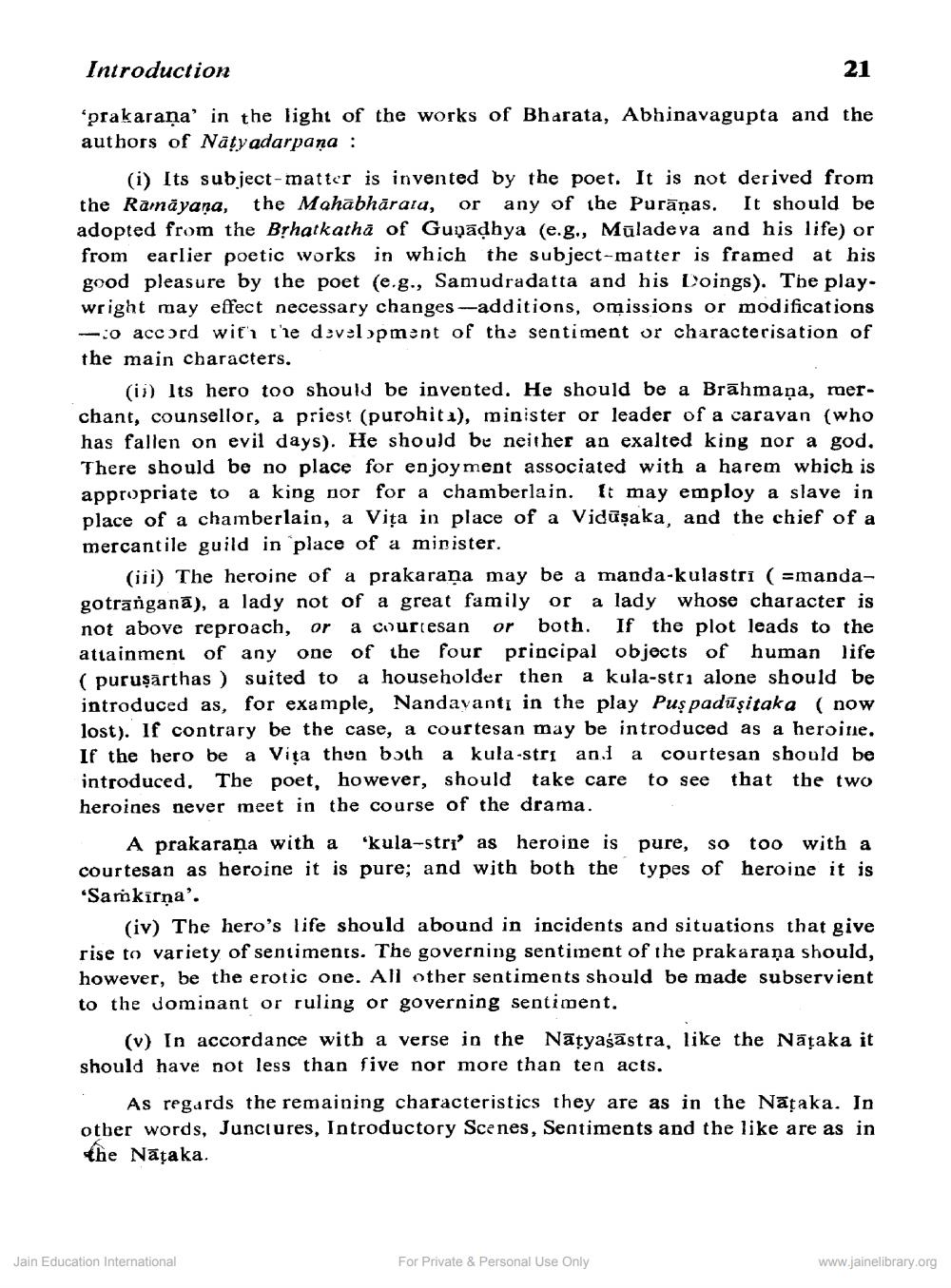________________
Introduction
21
'prakarana in the light of the works of Bharata, Abhinavagupta and the authors of Natyadarpana:
(i) Its subject-matter is invented by the poet. It is not derived from the Ramāyaṇa, the Mahabharata, or any of the Puranas. It should be adopted from the Bṛhatkatha of Gugadhya (e.g., Maladeva and his life) or from earlier poetic works in which the subject-matter is framed at his good pleasure by the poet (e.g., Samudradatta and his Doings). The playwright may effect necessary changes-additions, omissions or modifications. -o accord with the development of the sentiment or characterisation of the main characters.
(ii) Its hero too should be invented. He should be a Brāhmaṇa, merchant, counsellor, a priest (purohit), minister or leader of a caravan (who has fallen on evil days). He should be neither an exalted king nor a god. There should be no place for enjoyment associated with a harem which is appropriate to a king nor for a chamberlain. It may employ a slave in place of a chamberlain, a Vita in place of a Vidusaka, and the chief of a mercantile guild in place of a minister.
(iii) The heroine of a prakarana may be a manda-kulastri (=mandagotrangana), a lady not of a great family or a lady whose character is not above reproach, or a courtesan or both. If the plot leads to the attainment of any one of the four principal objects of human life (purusarthas) suited to a householder then a kula-stri alone should be introduced as, for example, Nandavant in the play Pus paduşitaka (now lost). If contrary be the case, a courtesan may be introduced as a heroine. If the hero be a Vita then both a kula-stri and a courtesan should be introduced. The poet, however, should take care to see that the two heroines never meet in the course of the drama.
A prakaraṇa with a 'kula-stri' as heroine is courtesan as heroine it is pure; and with both the 'Samkirna'.
(iv) The hero's life should abound in incidents and situations that give rise to variety of sentiments. The governing sentiment of the prakarana should, however, be the erotic one. All other sentiments should be made subservient to the dominant or ruling or governing sentiment.
pure, so too with a types of heroine it is
(v) In accordance with a verse in the Natyagästra, like the Nataka it should have not less than five nor more than ten acts.
As regards the remaining characteristics they are as in the Nataka. In other words, Junctures, Introductory Scenes, Sentiments and the like are as in the Nataka.
Jain Education International
For Private & Personal Use Only
www.jainelibrary.org




